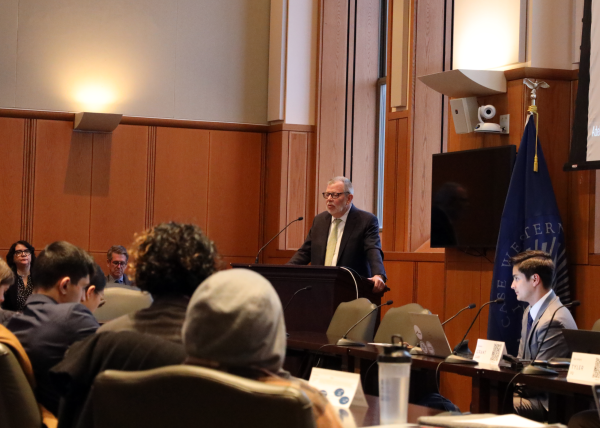Ohio heartbeat bill continues to its second hearing in the House
March 29, 2019
This past Tuesday the Ohio House of Representatives Health Committee heard over 50 witness testimonies in the second hearing about Senate Bill 23, or the Ohio Heartbeat Bill. This bill would make abortions illegal as soon as a fetal heartbeat is detected, which can be as early as six weeks into a pregnancy, possibly before a woman is aware she is pregnant.
This hearing is a continuation of last week’s health committee hearing where proponents of the bill and witnesses spoke in favor of it. The hearing this past Tuesday began with witness testimonies. The first was from Dr. Kathi Aultman, who, after over 35 years of experience as an OB-GYN performing abortions, has come to believe that the heartbeat is an appropriate measure of the viability of a fetus.
Defining viability is one of the most important points in the abortion debate, as fetal viability and pregnancy viability are different. The viability of a fetus is its ability to survive outside of the mother’s womb, while the viability of a pregnancy is whether the pregnancy can be carried to term.
Josh Brown, an attorney with the Ohio Christian Alliance reiterated that the bill is centered around viability. Mentioning Ohio’s 20-week abortion ban, Brown expressed the belief that Senate Bill 23 is “consistent with the progress of the case flow, it’s the next big step.” However, when questioned by Democrat Representative C. Allison Russo on the constitutionality of existing viability standards, he said that courts have upheld previous rulings.
Dr. Anita Somani of the Physicians Action Network brought up the growing maternal mortality crisis in America. In Ohio alone, 85 out of 100,000 women that have live births die from pregnancy complications. Somani postulated that “the more restrictions that are placed on abortion the more it affects the risk to the mother in terms of death.”
The United States, a first world country, has maternal mortality rates approaching those of a third world country. Somani then showed a pea as a visual demonstration of the size of a 6-week old fetus to further hammer in her point that a 6-week fetus is not viable.
Somani addressed the misconception that more sex education and effective contraception information leads to increased sexual activity. She believes that instead of placing limits on abortion in order to reduce it, the only way to effectively reduce abortion in Ohio is to increase access to contraception and healthcare. In her closing comments, Somani warned of Senate Bill 23: “laws like this force providers like Planned Parenthood, providers that offer low-income prenatal care to leave, to change what they do.”
Chair of the Department of Modern Languages and Literatures and Director of the Women’s and Gender Studies Program Cheryl Toman, said of how she saw the bill affecting her job if it passed, “I’m not sure it will change the way I do my job since this is just one in a chain of disasters for women in the last several years. So if anything, it gives me another angle of analysis to look at. Women have never achieved complete equality in any society or in any country so this bill is just a product of that reality.”
There is fear that this heartbeat bill and other bills like this will be used to overturn Roe v. Wade. When asked whether this plan was feasible, Toman said, “Possibly. I’m not sure if Roe v. Wade can be overturned since most believe it is settled law but it can still be challenged.”
As a final comment on the repercussions of this bill, Toman advises that “any law or proposed law that attempts to further control women’s bodies is a sign of a deeper malaise in the country.”
























